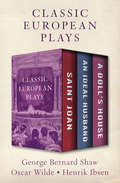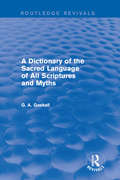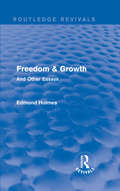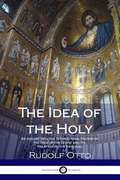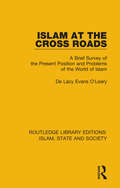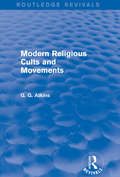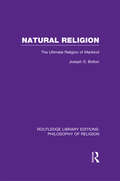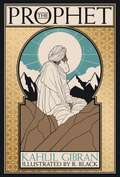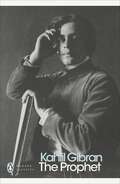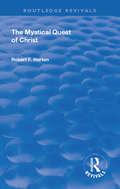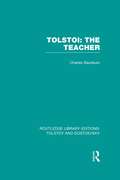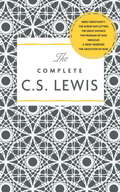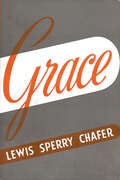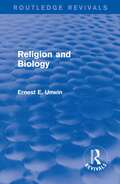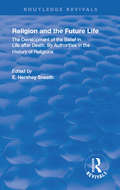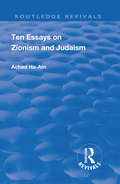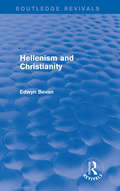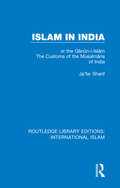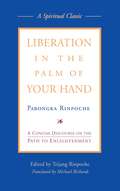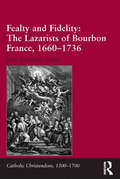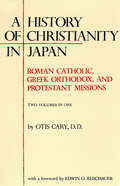- Table View
- List View
Classic European Plays: Saint Joan, An Ideal Husband, and A Doll's House
by George Bernard Shaw Oscar Wilde Henrik IbsenThese three timeless plays showcase the sparkling wit and provocative intellect of some of modern drama&’s greatest playwrights.Saint Joan by George Bernard Shaw: This complex drama depicts the life of Joan of Arc—from her childhood vision calling her to lead the French army against the English in the Hundred Years War through her eventual capture, trial, and burning at the stake. An epilogue depicts a retrial that clears Joan of heresy, declaring her a Christian martyr.An Ideal Husband by Oscar Wilde: In this timeless drawing room comedy, a blackmail scheme forces a married couple to reexamine their moral standards—providing a wry commentary on the hypocrisy of politicians. Carried along by nonstop witty repartee, this is satirical theater at its finest.A Doll&’s House by Henrik Ibsen: This quintessential work of dramatic realism depicts one woman&’s struggle against patriarchal society. The central character&’s rejection of a smothering marriage shocked theatergoers of the late nineteenth century while the play&’s pioneering style set the stage for twentieth century domestic drama.
A Dictionary of the Sacred Language of All Scriptures and Myths (Routledge Revivals)
by G GaskellG. A. Gaskell’s Dictionary of the Sacred Language of All Scriptures and Myths, first published in 1923, examines several different aspects of religion, including examples from Ancient Egyptian religion and mythology to modern-day Christianity, providing explanations of gods, events, and symbols in alphabetical order. This is a perfect reference book for students of theology or the history of religion.
Freedom & Growth: And Other Essays (Essay Index Reprint Ser.)
by Edmond HolmesFirst published in 1923, this book collects together sixteen essays written between 1912 and 1922 that reflect how the author's views on education became increasingly interwoven with their views on "things in general" — with half dealing with each subject. Reflecting this interweave, they are arranged chronologically rather than by subject due to their "unity of conviction and purpose". The author argues that the question "Is man free to direct the process of his own growth?" naturally follows from the question "Is man a free agent?" Thus if freedom is inextricably linked to growth it becomes of paramount interest to the teacher and is explored here under a broad range of topics.
The Idea of the Holy: An Inquiry into the Non-Rational Factor in the Idea of the Divine and Its Relation to the Rational
by Rudolf Otto John HarveyRudolf Otto's classic The Idea of the Holy brims with deep theological and philosophical insights into the theory of religion and spiritual belief in God. As both a theologian and a philosopher, Otto was fascinated by how the rational and non-rational interact and interplay with regard to humanity's religious beliefs. This investigation determines that valid, non-rational experiences are as poignant in the development of knowledge - yet how do we quantify and apportion value to various rational arguments for faith, and the experiences so many believers have had over the millennia? <p> The author delves into these arguments, and valiantly attempts to determine how the divine interacts with various emotions. He coins the term 'numinous' from the root word 'numen', to denote an emotional state of consciousness apt to receive spiritual insight. The many emotions and attuning of the soul to God falls under the designation, and it proved to be one of the most important ideas Otto would ever advance. <p> The Idea of the Holy remains an important text for students of both philosophy and religion, as well as spiritually inclined readers. Although Christian believers will profit from its concepts and deep discussion of spiritual matters, those of a different faith or of none often come to respect the intricacy and depth with which Otto explains and qualifies his theology in rational and non-rational terms. This edition contains the text of the original first translation to English of 1923 by John W. Harvey, who strived to preserve the clarity, concision and poise of Otto's lessons. Since the book was originally published in German in 1918, it has been translated into over twenty different languages.
Islam at the Cross Roads: A Brief Survey of the Present Position and Problems of the World of Islam
by De Lacy O'LearyThis title, first published in 1923, examines the historical development of the Islamic faith from its origins through to its position in the early twentieth century. It also examines the historical reactions of Islam to the West, including the Babist Movement in the nineteenth century. This title will be of interest to students of history and M
Modern Religious Cults and Movements (Routledge Revivals)
by Gaius Glenn AtkinsFirst published in 1924, this title explores the schools of religious thought and practice that sprung up towards the end of the nineteenth century and at the start of the twentieth: sects, mystics and spiritualists, theological sciences and scientific theologies, personal philosophies, and a huge range of new trajectories of thought within the established forms of Western European Christianity. In particular, the author explores the numerous ways in which ‘Eastern’ religious traditions, or at least spiritual patterns deriving inspiration from the Orient, gained a foothold among seekers in the West at a time of optimism and belief in progress.
Natural Religion: The Ultimate Religion of Mankind (Routledge Library Editions: Philosophy of Religion)
by Joseph Shaw BoltonDriven by the dissatisfaction and turmoil in religion at the time this book was originally published in 1923, the author sets out a belief that all people have an inborn religion and investigates what the future of this religion might be as it changes from age to age. In the short chapters here the author reflects on the current trends in theology at the time and the history of Christianity. This is an early critique of formalised religion and a simple advocacy of natural religion which is a glimpse into the basic philosophy of the early twentieth century.
The Prophet: Deluxe Illustrated Edition
by Kahlil GibranA special and deluxe illustrated edition of the inspirational, million-copy bestselling classic. The perfect gift for anyone journeying and questioning on the road of life.Few books can be described as universal. And yet, The Prophet, by Lebanese-American author Kahlil Gibran, can only be described as that. Originally published in 1923, The Prophet is considered Gibran's masterpiece and is one of the most beloved spiritual classics of all time. Further cementing its status as a worldwide classic is the fact that it has been translated into over 100 different languages, making it one of the most translated books in history. Drawn from Gibran's own experience as an immigrant, The Prophet transcends generations, languages, and borders.In this beautiful meditation on the meaning of life, Al Mustafa, the prophet, is about to board a ship back to his homeland after 12 years spent living in exile in the city of Orphalese. Before he departs, he is stopped by a group of followers who ask him to share his wisdom. In twenty-six poetic essays, Al Mustafa offers profound and timeless insights on various aspects of life and the myriad impulses of the human heart and mind. He offers lessons on love, marriage, children, pain, friendship, beauty, religion, joy, knowledge, reason and passion, time, good and evil, pleasure, and death.A timeless spiritual touchstone, this gorgeously illustrated gift edition is perfect for graduating students, or for anyone searching for solace, peace, hope, and purpose in today's world.
The Prophet (Penguin Modern Classics)
by Kahlil GibranA hugely influential philosophical work of prose poetry, Kahlil Gibran's The Prophet is an inspirational, allegorical guide to living, and this Penguin Modern Classics edition includes an introduction by Robin Waterfield.First published in the 1920's, The Prophet is perhaps the most famous work of religious fiction of the twentieth century, and has sold millions of copies in more than twenty languages. Gibran's Prophet speaks of many things central to daily life: love, marriage, death, beauty, passion, eating, work and play. The spiritual message he imparts, of finding divinity through love, blends eastern mysticism, religious faith and philosophy with simple advice. The Prophet became the bible of 1960s culture and was credited with founding the New Age movement, yet it still continues to inspire people around the world today. This edition is illustrated with Gibran's famous visionary paintings.Kahlil Gibran (1883-1931) was a poet, philosopher and artist, who stands among the most important Arabic language authors of the early twentieth century. Born in Lebanon, he spent the last twenty years of his life in the United States, where for many years he was the leader of a Lebansese writing circle in New York. He is the author of numerous volumes, including The Garden of the Prophet, The Storm, The Beloved: Reflections on the Path of the Heart, The Vision, Reflections on the Way of the Soul, and Spirit Brides. If you enjoyed The Prophet, you might like Herman Hesse's Siddhartha, also available in Penguin Modern Classics.'His work goes on from generation to generation'Daily Mail'To read it was to transcend ordinary levels of perception, to become aware ... of a more intense level of being'Independent
Revival: The Mystical Quest of Christ (Routledge Revivals)
by Robert F. HortonThe author argues that mysticism is not confined to Christianity, but the relation between the soul and Christ is a distinctive mystical experience; and it is specific in this sense, that this relation works out in a certain practice of life and certain development of character. It is this concrete effect of a true Christian mysticism which forms the subject of this book.
Tolstoi: The Teacher (Routledge Library Editions: Tolstoy and Dostoevsky)
by Charles-BaudouinThe author states here that Tolstoy was a great educator and his views on education were ingenious and profound. Despite being a great artist, Tolstoy also had pedagogic method and drew abundantly on the stores of science. The book looks at articles which Tolstoy wrote on education and childhood, comparing him frequently to Rousseau, and also outlines the influences of his travels which informed his knowledge of contemporary schooling. The conclusion considers the development of Tolstoy’s thought on teaching alongside the state of education at the time the book was first published, in 1923. This will be of interest for the educational historian as well as those interested in Tolstoy himself.
Tomorrow About This Time (Grace Livingston Hill #52)
by Grace Livingston HillWhen lovely young Silver Greeves's grandmother died, her last words were "Go to him. He needs you." Meeting her father for the first time, Silver was touched by his tenderness and yet he seemed so defeated and alone. Then she met Athalie, her violent stepsister, whose wanton rages were dishonoring the family name. Suddenly, Silver knew exactly why she had come: to bring peace, gentleness and love into her father's home. Grace Livingston Hill's biography and nearly all of her one hundred novels are in your Bookshare library.
The Complete C.S. Lewis
by C. S. LewisA rich, diverse collections of works by one of the 20th century's great Christian thinkers. While contemporary audiences may know C.S. Lewis best as the author of The Chronicles of Narnia, he also wrote extensively on Christianity. This collection brings together seven of his most highly regard works: Mere Christianity, The Great Divorce, The Problem of Pain, A Grief Observed, The Abolition of Man, Miracles, and the satirical Screwtape Letters, in which a demon attempts to coach his nephew on how to best tempt souls. Penguin Random House Canada is proud to bring you classic works of literature in e-book form, with the highest quality production values. Find more today and rediscover books you never knew you loved.
Grace: The Glorious Theme Of Spiritual Salvation In Christ The Savior
by Lewis Sperry ChaferDo you realize that grace is the very heart of Christianity and is almost unrecognized as such, even by Christians? Startling indeed, but only because Christianity is so generally treated as being merely an ethical system. Probably no book has appeared which more comprehensively states the glories of divine grace with their exact relation to everday life. In Grace Lewis Sperry Chafer clearly presents the fundamental distinctions between the principles of law and grace.
Grace: The Glorious Theme Of Spiritual Salvation In Christ The Savior
by Lewis Sperry ChaferDo you realize that grace is the very heart of Christianity and is almost unrecognized as such, even by Christians? Startling indeed, but only because Christianity is so generally treated as being merely an ethical system. Probably no book has appeared which more comprehensively states the glories of divine grace with their exact relation to everday life. In Grace Lewis Sperry Chafer clearly presents the fundamental distinctions between the principles of law and grace.
Religion and Biology
by Ernest E. UnwinFirst published in 1922, this book represents an attempt to outline the biological approach to the questions of religious thought. The author posits the book as a contribution to religious thought in relation to the purpose of God in Nature, providing readers with an overview of the advances and changes in thought that had occurred in the years before the book was written. The examinations of the nature of man and of evolution in relation to religion make up the bulk of the book along with a look at the argument from beauty. The book will be of interest to students of religion, biology and philosophy.
Revival: The Development of the Belief in Life After Death By Authorities in the History of Religions (Routledge Revivals)
by E. Hershey SneathThis book discusses the in-depth history regarding the development of the belief in the Life After Death, including incites from across history and culture. From Ancient Egyptian and Persian beliefs to modern Christianity and Islam.
Revival: Ten Essays on Zionism and Judaism (Routledge Revivals)
by Achad Ha-amThe present voluime of translations from the Hebrew of Achad Ha-Am differs in character from the volume of Selected Essays published in 1912 by the Jewish Publication Society of America. The earlier selection was confined, by the express desire of the publishing Society, to essays dealing with the broader aspects of Judaism and Jewish thought; essays of a more polemical character, in which the author has defined his attitude to the modern Jewish national movement, were designedly omitted. Of the then further essays included in the present selection, only two belong to the former category, and these have been placed, out of their chronological order, at the end. The other eight essays all deal with one aspect or another of Zionism, and they form a series which will enable the English reader who is interested in the Zionist movement to follow its history under the guidance of one who is at the same time among its staunchest pillars and its most unsparing critics.
Hellenism and Christianity (Routledge Revivals)
by Edwyn BevanFirst published in 1921, this title examines the relationship between what the author labels the ‘rationalist’ element in Western culture on the one hand, derived from the ancient Greeks, and Christianity, on the other. Bevan contends that these two traditions are distinct, but not mutually exclusive, and that to understand fully their mutuality and reciprocity it is necessary to examine the distinct history of both: their individual provenances, their fusion and interpenetration, and also, their future together. The first chapter attempts to indicate the significance of Hellenic culture in its relation to Eastern civilisation. The extinction of Paganism at the time of Augustine is examined, as is a selection of moral issues associated with the Christian life, as that is interpreted by the author. Finally, the notion of ‘progress’ is investigated with specific reference to the position of Christianity in the modern world.
Islam in India: or the Qᾱnῡn-i-Islᾱm The Customs of the Musalmᾱns of India (Routledge Library Editions: International Islam #5)
by Ja'far SharifFirst published in 1832, this work was at the time considered an authoritative account of the beliefs and practices of the Musalmᾱns of India. This 1921 reprint includes an introduction from the editor, Dr William Crooke, which presents what is known about both Ja’far Sharif and the translator, G. A. Herklots. It also distinguishes the original material from the changes made by the translator and compares the book with other similar works published in the nineteenth-century. This book will be of interest to those studying the history of Islam, the history of ethnography and the British Empire.
Liberation in the Palm of Your Hand: A Concise Discourse on the Path to Enlightenment (Tibetan Buddhism Ser.)
by Michael Richards Trijang Rinpoche Pabongka RinpochePabongka Rinpoche was one the twentieth century's most charismatic and revered Tibetan lamas, and in Liberation in the Palm of Your Hand we can see why. In this famous twenty-four-day teaching on the lamrim, or stages of the path, Pabongka Rinpoche weaves together lively stories and quotations with frank observations and practical advice to move readers step by step along the journey to buddhahood. When his student Trijang Rinpoche first edited and published these teachings in Tibetan, an instant classic was born. The flavor and immediacy of the original Tibetan are preserved in Michael Richards' fluid and lively translation, which is now substantially revised in this new edition.
Fealty and Fidelity: The Lazarists of Bourbon France, 1660-1736 (Catholic Christendom, 1300-1700)
by Seán Alexander SmithThe career of the French saint Vincent de Paul has attracted the attention of hundreds of authors since his death in 1660, but the fate of his legacy - entrusted to the body of priests called the Congregation of the Mission (Lazarists) - remains vastly neglected. De Paul spent a lifetime working for the reform of the clergy and the evangelization of the rural poor. After his death, his ethos was universally lauded as one of the most important elements in the regeneration of the French church, but what happened to this ethos after he died? This book provides a thorough examination of the major activities of de Paul’s immediate followers. It begins by analysing the unique model of religious life designed by de Paul - a model created in contradistinction to more worldly clerical institutes, above all the Society of Jesus. Before he died, de Paul made very clear that fidelity to this model demanded that his disciples avoid the corridors of power. However, this book follows the subsequent departures from this command to demonstrate that the Congregation became one of the most powerful orders in France. The book includes a study of the termination of the little-known Madagascar mission, which was closed in 1671. This mission, replete with colonial scandal and mismanagement, revealed the terrible pressures on de Paul’s followers in the decade after his demise. The end of the mission occasioned the first major reassessment of the Congregation’s goals as a missionary institute, and involved abandoning some of the goals the founder had nourished. The rest of the book reveals how the Lazarists recovered from the setbacks of Madagascar, famously becoming parish priests of Louis XIV at Versailles in 1672. From then on, fealty to Louis XIV gradually trumped fidelity to de Paul. The book also investigates the darker side of the Congregation’s novel alliance with the monarch, by examining its treatment of Huguenot prisoners at Marseille later in the century, and its involvement with the slave trade in the Indian Ocean. This study is a wide-ranging investigation of the Lazarists’ activities in the French Empire, ultimately concluding that they eclipsed the Society of Jesus. Finally, it contributes new information to the literature on Louis XIV’s prickly relationship with religious agents that will surprise historians working in this area.
A History of Christianity in Japan
by Otis CaryCary's impressive work, first published in two volumes, appears here in a convenient one-volume edition. The first part deals with Roman Catholic and Greek Orthodox missions; the second, with Protestant missions.
A History of Christianity in Japan
by Otis CaryCary's impressive work, first published in two volumes, appears here in a convenient one-volume edition. The first part deals with Roman Catholic and Greek Orthodox missions; the second, with Protestant missions.
